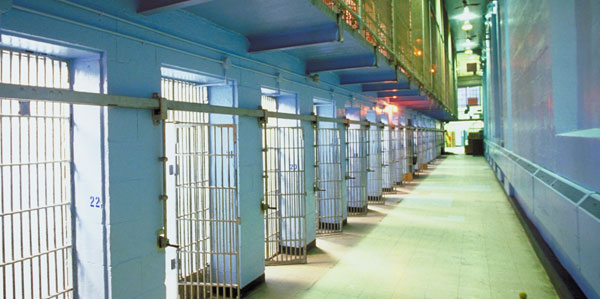Going Gray Behind Bars: What to Do With Elderly Prisoners?
The February sun pours through barred windows onto 16 beds arranged, dormitory-style, around a small room. A uniformed man stands at attention by the nursing station, watching a handful of white-haired men sleep.
These snoozing inmates in the Activities of Daily Living Unit, or ADL, at the Massachusetts Correctional Institution in Norfolk are prisoners who have been in custody for years, even decades. When they could no longer care for themselves — feed themselves, stand in lines for medication, or use the bathroom on their own — they were transferred to this “sub-acute care” facility, where round-the-clock staffers tend to their basic needs.
There’s another ADL unit at the prison in Shirley, and together the two facilities have 29 beds. Soon, that won’t be nearly enough. In the past decade, the number of state prisoners older than 60 has jumped 80 percent — from 325 to 584 — and inmates older than 55 are now the fastest-growing segment in state and federal prison populations. According to projections released by the Division of Capital Asset Management in January, the state will need about 900 additional beds by 2020. Massachusetts, in other words, is on the hook for a lot of very expensive care in the years ahead. One study found that it costs three to nine times more to provide care to elderly inmates.
This jump in older prisoners partly reflects the aging of baby boomers, but it’s also the result of tough-on-crime legislation such as the mandatory minimum and “truth in sentencing” laws, which require lengthy sentences. The result: Record numbers of people are now serving record amounts of time.
While the elderly presently account for just 6 percent of state inmates, the fiscal impact of the changing demographic could be huge. In 2008 the legislature authorized $550 million for upgrades to correctional facilities, commissioning a master plan to lay out spending options. Adding the necessary beds, the plan found, would likely require building three new ADL units.
And if the legislature passes a “three-strikes” law it’s currently considering, the number of elderly inmates in state custody is sure to increase even more. To counter the trend, lawmakers have proposed the “compassionate release” of infirm prisoners into private care, which would unload most medical expenses onto Medicare or Medicaid.
Whether the state builds new facilities or moves to private care, it has to do something. “When you have somebody who has grown old in the system, who now has any number of debilitating diseases, we have a constitutional [responsibility] to provide the standard of care to that inmate,” says Sandra McCroom, the state’s undersecretary of criminal justice. “They don’t just go away.”



